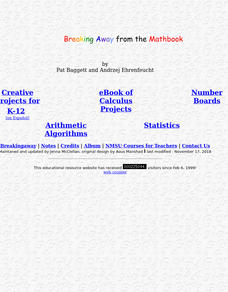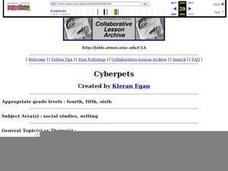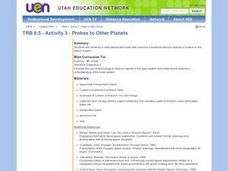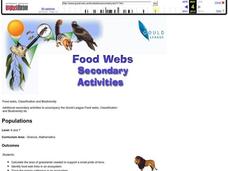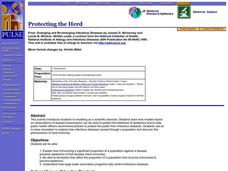Curated OER
Paper
Students study the process of creating paper. They read and discuss a flier and visit centers in small groups to study Paper Fun, Historical Paper, What Paper Is Made Of, and Homemade Paper. After visiting each center, they share the...
Curated OER
The US-Taiwan Textile Trade Case
Students explore the issues of free trade and protectionism by role-playing. In particular, they will learn how these terms apply to an understanding of U.S.-Taiwan trade in textiles. After a lecture/demo, students break into groups for...
Curated OER
First Aid Kits
Pupils explain what items make up a First Aid Kit and what the purpose of the items is. They draw and label at least 10 items that go into a First Aid Kit. On the back cover, they list these items and explain how the item is used.
Curated OER
Lesson Plan on the Division of Labor
Fifth graders explain how workers performing specific tasks contributes to the total production output of the workers.
Curated OER
Handling Data: Comparing Distributions
Students gather information by analyzing graphs, diagrams and pie charts. In this graphs and diagrams lesson, students complete addition and subtraction problems. Students discuss a pie chart. Students use information to crate a stacked...
Curated OER
Name Geneology Essay
Students research the meaning of their names and write an essay about their findings.
Curated OER
Clocks and Time
Pupils construct clocks and then learn how to read a clock face, tell time, and determine how much time has elapsed.
Curated OER
The Reason for the Seasons; Science, Geography
Students think about what causes the seasons to change, reflect on what they know about seasons and how their lives affected by seasonal changes.
Curated OER
Inscribed Angles
Learners analyze inscribed angles and intercepted arcs and explore the relationships between the two. They investigate the properties of angles, arcs, chords, tangents, and secants to solve problems involving circles.
Curated OER
Investigation 2 - Greenhouses
Third graders set up a miniature greenhouse to help them explain how nonliving things affect the growth of living things.
Curated OER
See What You Can Find
Third graders search for and locate examples of acute, right, straight and obtuse angles in the classroom. They record their findings by writing the exact location of each angle found and organize them into angle categories.
Curated OER
Cyberpets
Students learn about the differences between cyberpets and live pets and the consequences of bringing a cyberpet to school.
Curated OER
Glaciers Leave Their Imprint
Students study various types of glaciers and the landforms they create. Working in pairs, they research a type of glacial landform and construct a calendar page illustrating and describing it. The pages be compiled to create a class...
Curated OER
Illinois County Dragonfly Poster
Learners identify the dragonflies found in their Illinois County by using the Odonata database list to find the scientific names, searching field guides and the Internet for (1) the common name (2) description (3) life habits and (4) a...
Curated OER
Probes to Other Planets
Sixth graders use a list of robot components and common household items to design and construct a robot spacecraft model suitable for exploring the Saturn System. They present the robots to the class.
Curated OER
Populations
Pupils calculate the area of grasslands needed to support a small pride of lions. They also identify food web links in an ecosystem and trace the energy pathways in an ecosystem.
Curated OER
Sketchbooks
Third graders review the importance of using a sketchbook in art. Using materials found in the classroom, they create their own sketchbook. They share their creation with the class and start sketching in their book.
Curated OER
TV Documentary on Coal
Young scholars are divided into five groups with each group assigned one of the following topics: how coal is formed, how coal is mined, how coal is used to create energy, environmental impact of coal mining, and the benefits of coal...
Curated OER
Design a Pollinator
Students make a scientific drawing of a pollinator with at least five traits that make them well adapted to a given plant(s). They describe in their science notebook the adaptations that make their pollinator well suited to a given plant.
Curated OER
Protecting the Herd
Students explain how immunizing a significant proportion of a population against a disease prevents epidemics of the disease (herd immunity). They list factors that affect the proportion of a population that must be immunized to prevent...
Curated OER
Mallard's Wet Olympics
Students investigate some of the different characteristics of living things. They make observations from reading and interactive media. Students observe that animals move in different ways and have adaptations to aid in that action.
Curated OER
Cell Theory, Plant And Animal Cell Comparison
Tenth graders study plant and animal cells. In this investigative lesson students draw their own animal cells and label them.









